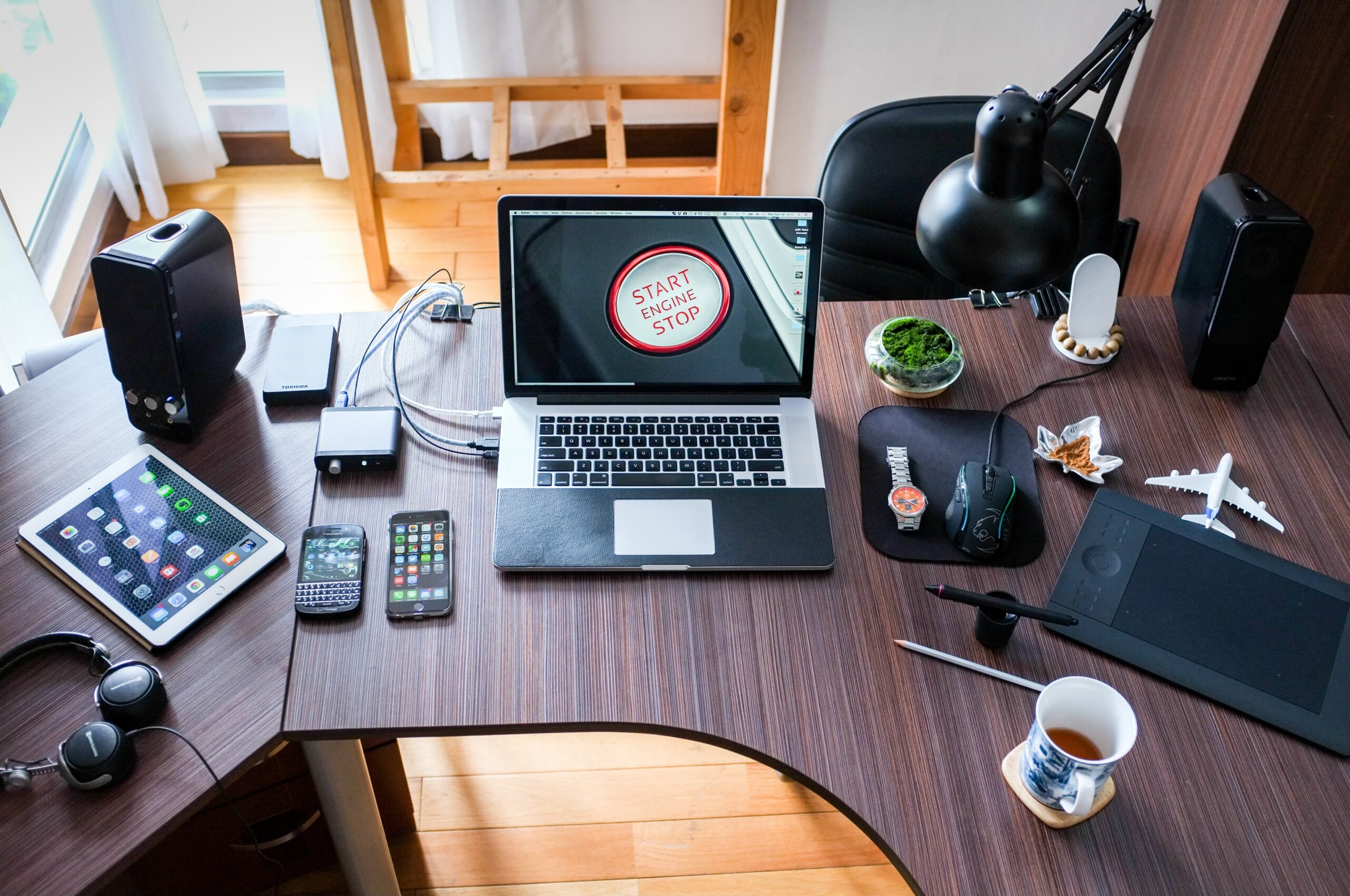Ergonomics For The Office: 8 Must-Have Office Equipment For Healthier Employees
ergonomics in the office, ergonomic office, office ergonomics, ergonomic office desk
Do you suffer from chronic back pain, stiff neck, fatigue, numb wrists, and similar ailments? Do your symptoms get worse after work? The reason behind this can be flawed office ergonomics. Correct ergonomics for the office can prevent long-term health conditions in workers and enhance your team’s performance. Let’s find out how!
Intro
When you think about work injuries, you probably imagine someone falling off a ladder or breaking a bone on a construction site. But a modern office can be as dangerous for your health as any other job. And a common culprit is incorrect workstation ergonomics.
Such injuries don’t happen right away. They take time to develop and even longer time to treat. Untreated office injuries can grow into significant health problems that harm your team’s well-being and performance. Whether you’re a business owner and want to ensure the health of your staff or a remote worker working from home, ergonomics for the office is key to effective work and long-term health.
What is ergonomics in the office?
Ergonomics in the office refers to a workstation design created to improve workers’ posture, capabilities and adapt to their unique body needs. Anything from the height of your chair to the distance between your eyes and the monitor is important for your health and performance.
Why is it important to ensure office ergonomics?
Office ergonomics is an investment in your staff’s health. People spend at least 8 hours a day working, and most of that time, they sit at their desks, looking at computer screens. If you work from home, you might spend even more time at your desk, as your work, eating breaks, and entertainment are all tied to the computer.
If even one part of your workstation isn’t perfectly adapted to your body, it can progress into trauma. Such injuries limit your working capacity and contribute to feeling fatigued faster, making it harder to concentrate at work and do your job. Ensuring proper workstation ergonomics benefits your workers’ well-being and enhances their performance.
Common office injuries because of poor ergonomics
When you think of a traditional office, you might not see it as a dangerous place. However, poor office ergonomics can result in a long-term deterioration of health. Here are the three most common office injuries due to poor ergonomics.
- Eye strain — old monitors, incorrect posture, bad lighting, or inadequate distance to the monitor can cause eye strain. We use tiny muscles to control the movement of the eyeball, focus, change focus distance, etc. When you look at a screen for too long or have difficulty focusing (poor lighting, glare, etc.), your muscles get tired and eventually cause eye strain, vision problems, and even headaches or migraines.
- Neck and back injuries — the lower back and your neck are most prone to injury. When you sit in an awkward position or on an uncomfortable chair, your back muscles strain and eventually wear. That can cause inflammation and painful contractions. In severe cases, you might develop a herniated disk in the lower back.
- Wrists and hands — our wrists are sensitive body parts that aren’t designed to withhold a lot of pressure. However, when we spend several hours typing and navigating a computer mouse, we put our wrists in an abnormal position. A common wrist trauma is carpal tunnel syndrome, which causes stiffness and numbness in the hand and wrist. It develops when you compress the median nerve too much.
How can I make my office ergonomic?
Creating an ergonomic office is the first step to ensuring your team’s well-being, investing in their health, and improving work efficiency. Start by doing an audit of your current office equipment. Check if chairs, desks, monitors, etc., are suited for your staff and whether they meet the latest health recommendations. Maybe you’re already halfway there. But to ensure, here’s the list of 8 must-have office items to create a healthy and ergonomic office environment.
8 ergonomic equipment upgrades for your office
1.Ergonomic office chair
Although standing desks and other alternatives are becoming popular, it can be challenging to stay standing in one place for several hours. So, if you have to sit, you have to find a comfortable seat.
You should be able to adjust your seat’s height and backrest position to put your forearms on the desk in a relaxed position. When you sit, your feet should touch the floor, and your thighs should be parallel to the floor. The backrest should support the natural curvature of your spine. You shouldn’t feel like leaning against a brick wall.
2.Ergonomic office desk
Your desk should be the right height for your body, allowing your legs to move freely and your forearms to rest on the top. It’s important to have enough space for your legs to move. Otherwise, you might compress them too much and obstruct the blood flow. Also, you might want to invest in padding for your forearms if the desk edges are sharp. Constant friction can cause calluses on your elbows and wrists.
3.Keyboard
You should place your keyboard in front of you. When typing, place your hands without reaching or bending too much. However, the size of the keyboard can also influence ergonomics. If you have broad shoulders and bigger hands, it’s worth buying a keyboard suitable for your body composition.
4.Mouse
Your mouse has to be within a comfortable distance, so you don’t need to reach or bend your arms. Also, try using keyboard shortcuts when doing repetitive actions to reduce mouse usage. Always keeping your palm clenched can cause finger strain and put your wrist in an uncomfortable position. You can also go to the mouse settings on your computer and set the light sensitivity to the mouse so that you don’t need to apply too much pressure when clicking or navigating it.
5.Monitor
The monitor should be directly in front of you. The upper part of the monitor must stand at eye level or just 5-8 centimeters below. Also, it’s important to use quality devices. If your monitor produces inadequate luminosity, flickering light, or changes colors, it’s time to replace it. The placement of your monitor is also crucial. Put it where sunlight can’t produce glare and reflection.
6.Laptop stand
If you use a laptop for your work, it’s worth investing in a laptop stand. A laptop stand is a structure that elevates the laptop screen to the right height. However, if you use the stand, you should also use a remote keyboard and a mouse instead of a touchpad.
7.Footrest
A footrest isn’t necessary for your office, but it can be a cheaper alternative if you can’t adjust the height of your chair and desk. As your feet should slightly touch the floor, it’s important to ensure proper leg support. Don’t worry if you don’t have a footrest, you can use books or other appliances to support your feet.
8.Wrist support
Often overlooked but crucial — wrist support can help you avoid carpal tunnel syndrome. When you use a mouse for an extended time, you bend your wrist in an awkward position and put a lot of pressure on the fragile ligaments. Wrist support keeps the wrist in the correct position and relaxes tensed muscles.
The traditional wrist support comes as padding that you put under your wrist. But padding can be annoying and useless when you need to switch between the keyboard and mouse.
That’s why we created Uppo, an ergonomic wristband. Uppo wristband stays on your wrist at all times. All you need to do is put it on, which adjusts to your movement and position. Whether you sit at your desk or use your laptop on the couch (although we don’t recommend that), Uppo keeps your wrist in a natural and relaxed position.
We use durable and lightweight materials so that you can use Uppo the whole day without experiencing skin irritation or overheating. If you spend several hours a day at your desk, you must find ways to exercise your wrists and find appropriate support. And Uppo is a great way to improve your wrist health.
Watch how Uppo can improve your office ergonomics: https://youtu.be/wUsXeVVN2YE
Learn more about the Uppo wristband.
Conclusion
Ergonomics for the office is an investment in the longevity and happiness of your team. No one wants to work if they are in pain. Sitting the whole day at a desk might seem harmless, but many people develop health conditions just because of poor workstation ergonomics. If you want to improve your staff’s efficiency and motivate them, a few adjustments can go a long way in keeping them healthy and happy.



